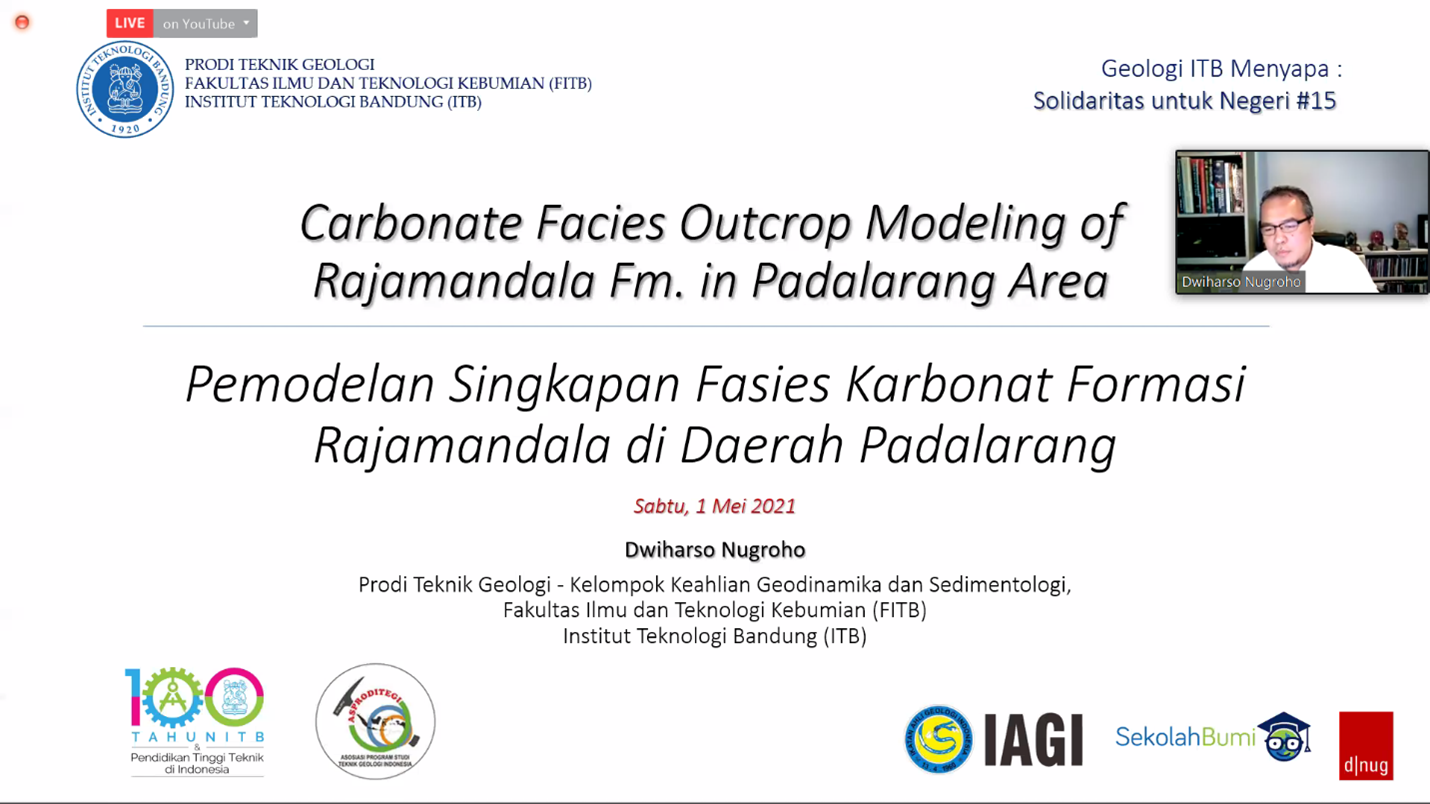ITB Lecturer Performs Modeling of Carbonate Facies Outcrops of the Rajamandala Formation in Padalarang

BANDUNG, itb.ac.id— “Geologi ITB Menyapa”, a series of webinar held by Geological Engineering ITB, is back with its 15th episode highlighting the topic “Modeling of Carbonate Facies Outcrops of the Rajamandala Formation in Padalarang”.
This webinar was held on Saturday (1/5/2021). Dr. Dwiharso Nugroho, who was the speaker, is a lecturer from Geodynamics and Sedimentology group of expertise, Geological Engineering ITB.
Dr. Dwiharso Nugroho, also known as Nuki, explained that the modeling is based on a field activity earlier in 2003, in Tuban, East Java. From this observation, Nuki and team struggled in presenting facies map.
“That happened because what was seen on the surface is a condition after tectonic deformation. The facies geometries should be easy to imagine with reference, but in field, it was not. It is because they didn’t form familiar and recognizable geometries that results in uncertainties for its continuity,” he explained.
As time went on, undersurface data modeling applications were starting to develop and Nuki tried to answer his curiosity through his research.
Getting To Know Facies
Facies is a characteristic that is determined by physical and chemical appearance that represent sediment transporting and deposition. In a higher level, there are also facies association, facies succession, and architectural elements. Facies succession and architectural elements are parts of facies association group. In the modeling, Nuki used facies association concept for clearer boundaries and geometries.
“The modeling is done to acknowledge the distribution of facies association in Rajamandala area when it is deposited, as one of the basics to collate its evolution sedimentation analysis,” he explained.
Nuki admitted to complete his goal of distributing facies by choosing a modeling method. There are five considerations. First, if it is done with mapping through geospace, facies distribution arrangement in geospace would be difficult. Using facies modeling, facies distribution can be done through depospace.
Second, with sequence stratigraphy approach, facies spread in modeling can meet the facies concept rule. Third, the collected data can also represent itself, statistical behavior, and special data population. Fourth, “Expert Judgement” can be done with a probability approach for each case. Fifth, the realization and execution can be optimal.
Based on his findings, Nuki explained that carbonate facies found in Rajamandala is one of isolated carbonate platforms, which is originally isolated from the land. Carbonate Platform is a rock body dominated by carbonates, which is usually located in a possible carbonate factory formation area. Platform Top in Rajamandala also has a grainy and miliolyde-rich character.
To close his presentation, Nuki explained the role of carbonate facies outcrop modeling in Rajamandala. The modeling can be used for references for its exact same variance with the ones undersurface. Further, this also results in easier ascertainment in lithology of the seismic facies and electrofacies analysis.
Reporter: Pravito Septadenova Dwi Ananta (Teknik Geologi, 2019)
Translator: Tamara Maharani Alamsyah (TPB FSRD 2020)

scan for download






